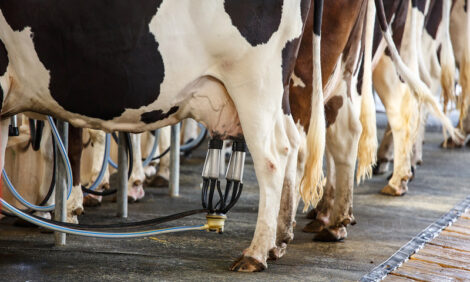



Teagasc Use Grass to Produce More for Less
IRELAND - Dairy farms in the south of the country have long been the envy of those producing milk in the border, midland and western region, because of their ability to produce milk cheaply from grass.Four years of Teagasc research at Ballyhaise Agricultural College has proven that similar amounts of grass can be grown and utilised effectively in the BMW region. To mark this development, a major Open Day for all dairy farmers in the region will take place at Ballyhaise Agricultural College on Thursday, 5 March 2009 from 10.30am to 3pm. The purpose of the day is to highlight the potential for high profit dairy systems in the BMW region. Speakers will address management strategies to grow and utilise more grass on wetter dairy farms, improve herd fertility and animal health and increase the overall profitability of milk production.
“Maximising days at grass is essential to reduce milk production costs, a key objective of Teagasc programme for 2009”, explains Teagasc researcher Brendan Horan. “This spring, using the paddock and roadway system we’ve developed at Ballyhaise, we turned the herd out to grass on 10 February and with a compact calving herd we can now use a lot more grass each season. The fertility performance of the herd has been turned around by doubling herd EBI to €100 in 2009.” Research and advisory studies show that high grass use and low-cost milk production go hand-in-hand. At the open day, visitors can meet Teagasc’s research team including animal breeding, grassland and veterinary experts and Teagasc’s most recent appointment, New Zealander Adrian van Bysterveldt.
Concluding, Dr Horan said: “The strategy we’re employing at Ballyhaise is to maximise milk solids production per hectare using its grass growing advantage. Because large quantities of high quality grass can be grown in this part of the country, high yields of milk solids can be obtained on the region’s dairy farms from grazed grass. Indeed milk solids production has increased from 946 to 1,135 kilograms per hectare over the course of the research programme. Such yields are comparable with anywhere else in the country.”
TheCattleSite News Desk


